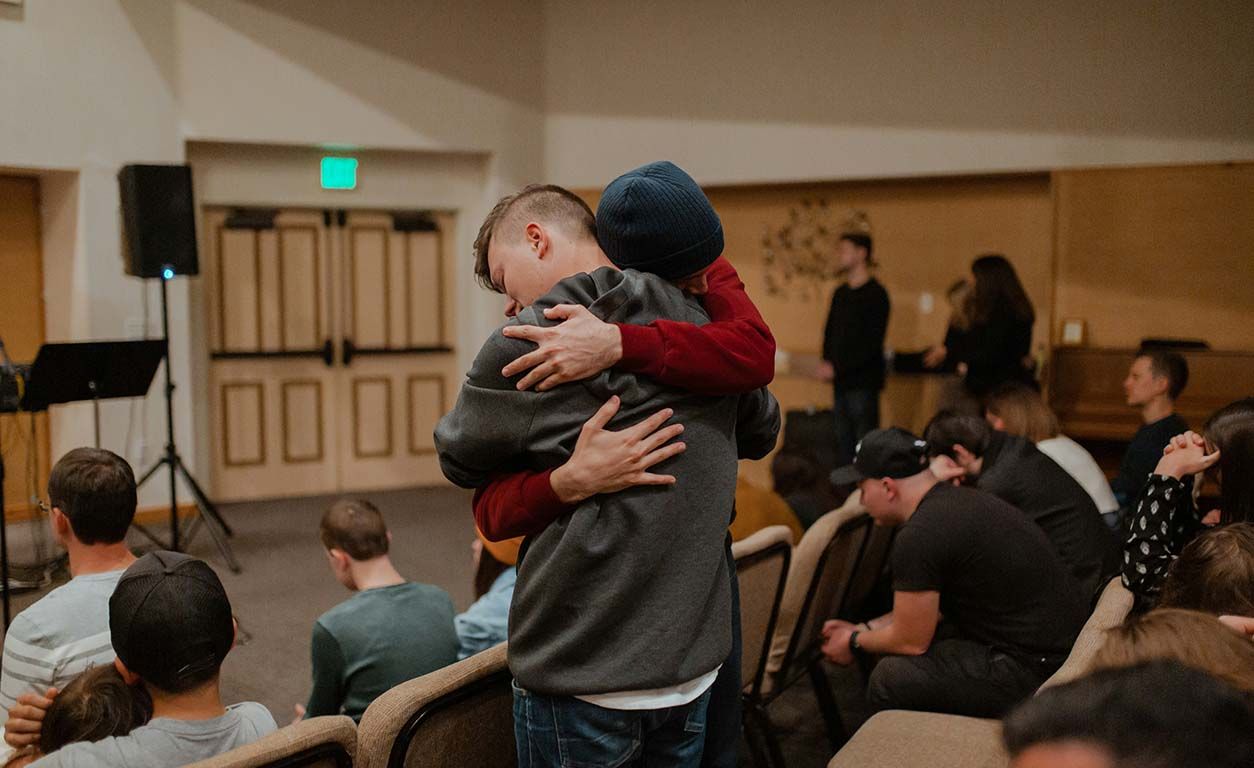Imagine waking up and starting your day. As you brush your teeth or get dressed, you might not think twice about the process. But in Spanish, these simple acts involve a special type of verb called a reflexive verb.
Reflexive verbs are like mirrors for actions—they show that the subject of the verb is doing something to themselves. This might sound a bit tricky, but don't worry! In this quick guide, we'll break down reflexive verbs in Spanish, making them easy to understand and use.
Let's get started!
- 10 Must-Know Spanish Grammar Points for Beginners
- How To Learn Spanish On Your Own?
- 10+ Best Resources For Spanish Learners

What Are Reflexive Verbs?
Reflexive verbs might sound a bit mysterious at first, but they're quite straightforward once you get the hang of them. In Spanish, reflexive verbs are verbs where the subject performs an action on themselves.
A reflexive verb is used when the subject and the object of the verb are the same. For example, if you say, "I wash myself" in English, the verb "wash" is reflexive because the action of washing is being done by and to the same person. In Spanish, this concept is represented by adding reflexive pronouns to the verb.
Structure Of Spanish Reflexive Verbs
In Spanish, reflexive verbs are formed with the following structure:
[ Subject + Reflexive Pronoun + Verb ]
The reflexive pronoun matches the subject and is placed before or after the verb. Let's see how they work!
Reflexive Pronouns In Spanish
- Me (myself) – for "yo" (I)
- Te (yourself) – for "tú" (you, informal)
- Se (himself/herself/itself/yourself) – for "él/ella/usted" (he/she/you formal)
- Nos (ourselves) – for "nosotros/nosotras" (we)
- Os (yourselves) – for "vosotros/vosotras" (you all, informal in Spain)
- Se (themselves/yourselves) – for "ellos/ellas/ustedes" (they/you all formal)
Examples In Everyday Life Actions
Let's look at a few examples to see reflexive verbs in action:
- Me despierto (I wake up): Here, "despertar" (to wake up) is reflexive, and the action happens to the subject, "me."
- Te duchas (You shower): "Ducharse" (to shower) is used reflexively as the action is performed by and on the subject, "te."
- Se viste (He/She gets dressed): "Vestirse" (to get dressed) reflects the action back to the subject, "se."


Difference Between Reflexive And Non-Reflexive Verbs In Spanish
To master reflexive verbs in Spanish, it's important to understand the difference between reflexive and non-reflexive verbs. Reflexive verbs show that the subject of the sentence is performing an action on itself, while non-reflexive verbs indicate that the action is directed toward someone or something else.
Non-Reflexive Verbs
Non-reflexive verbs describe actions performed by the subject on someone or something other than themselves.
Examples:
- Lavar (to wash) as a non-reflexive verb:
- Lavo los platos. (I wash the dishes.)
In this sentence, the subject (I) is performing the action (washing) on something else (the dishes). The action doesn't come back to the subject.
Reflexive Verbs
The reflexive verb indicates that the subject is both doing and receiving the action.
Examples:
- Lavarse (to wash oneself) as a reflexive verb:
- Me lavo las manos. (I wash my hands.)
Here, "me" shows that the subject (I) is performing the action on themselves. The verb "lavarse" indicates that the action of washing is happening to the subject.
Comparing Reflexive And Non-Reflexive Uses
Some verbs in Spanish can be used both reflexively and non-reflexively, depending on who is receiving the action:
Despertar vs. Despertarse:
- Despierto a mi hermano. (I wake my brother up.) – Non-reflexive
- Me despierto a las 7 a.m. (I wake up at 7 a.m.) – Reflexive
Llamar vs. Llamarse:
- Llamo a Laura. (I call Laura.) – Non-reflexive
- Me llamo George. (My name is George.) – Reflexive
In the first example, "despertar" is used non-reflexively when waking someone else, while "despertarse" is reflexive when waking yourself. In the second example, "llamar" is non-reflexive when calling someone, but "llamarse" is reflexive when referring to naming oneself.
When you are able to determine whether an action affects the subject or something else, you can choose whether to use the reflexive or non-reflexive form of the verb. This distinction is key to using Spanish verbs correctly in various contexts.
Common Reflexive Verbs In Spanish
Ready to learn the most common reflexive verbs? I rounded up the easiest ones you can use in daily conversations.
|
Spanish Reflexive Verb |
English Translation |
Example Sentence |
|
Despertarse |
To wake up |
Me despierto a las 6 a.m. (I wake up at 6 a.m.) |
|
Levantarse |
To get up |
Te levantas temprano. (You get up early.) |
|
Ducharse |
To shower |
Él/Ella se ducha todos los días. (He/She showers every day.) |
|
Cepillarse |
To brush (teeth/hair) |
Nos cepillamos los dientes después de comer. (We brush our teeth after eating.) |
|
Vestirse |
To get dressed |
Me visto antes de salir. (I get dressed before going out.) |
|
Acostarse |
To go to bed |
Ustedes se acuestan a las 10 p.m. (You all go to bed at 10 p.m.) |
|
Afeitarse |
To shave |
Él se afeita por la mañana. (He shaves in the morning.) |
|
Maquillarse |
To put on makeup |
Ella se maquilla para la fiesta. (She puts on makeup for the party.) |
|
Peinarse |
To comb one's hair |
Me peino después de la ducha. (I comb my hair after the shower.) |
|
Lavarse |
To wash oneself |
Te lavas las manos antes de comer. (You wash your hands before eating.) |
|
Sentarse |
To sit down |
Nos sentamos en el sofá. (We sit down on the couch.) |
|
Sentirse |
To feel (emotionally or physically) |
Me siento feliz hoy. (I feel happy today.) |
|
Preocuparse |
To worry |
Ella se preocupa por el examen. (She worries about the exam.) |
|
Quedarse |
To stay/remain |
Nos quedamos en casa durante el fin de semana. (We stay at home during the weekend.) |
|
Bañarse |
To bathe |
Él/Ella se baña por la noche. (He/She bathes at night.) |

Reflexive Verbs VS Reciprocal Verbs
In the world of Spanish grammar, we can find verbs that seem similar but have completely different roles. This happens with reflexive and reciprocal verbs. They can seem similar at first glance but serve different purposes in Spanish.
Reflexive Verbs: When The Action Reflects Back
As we mentioned before, reflexive verbs refer to actions the subject performs on itself. The key here is that the action "reflects" back to the doer.
Examples:
- Me baño (I bathe myself)
- Te lavas las manos (You wash your hands)
- Él/Ella se despierta temprano (He/She wakes up early)
In each of these examples, the subject is both the doer and the receiver of the action. The verb is paired with a reflexive pronoun (me, te, se, nos, os, se) to indicate this self-directed action.

Reciprocal Verbs: When The Action Is Shared
Reciprocal verbs, on the other hand, describe actions that two or more subjects perform on each other. Think of it as a mutual exchange—what one person does, the other does in return. Reciprocal verbs also use reflexive pronouns, but the context of the sentence makes it clear that the action is shared:
- Nos abrazamos (We hug each other)
- Se encuentran en el parque (They meet each other in the park)
- Se llaman todos los días (You all call each other every day)
In these examples, the action is not self-directed but rather reciprocal between the subjects. The meaning is clear from the context: the subjects are interacting with one another.
How To Spot The Difference?
To tell reflexive verbs apart from reciprocal verbs, focus on the context of the sentence:
- If the subject is doing something to themselves, it's reflexive.
- If the subjects are doing something to each other, it's reciprocal.
For instance, "Se besa" means "He/She kisses him/herself" (reflexive), while "Se besan" means "They kiss each other" (reciprocal). Although both use the reflexive pronoun se, the meaning changes based on whether the action is self-directed or shared.

Common Mistakes When Using Reflexive Verbs In Spanish
When learning reflexive verbs in Spanish, it’s easy to stumble upon a few common mistakes. Don't worry—you're not alone! Here’s a breakdown of these frequent errors and some tips to help you use reflexive verbs correctly.
1. Forgetting The Reflexive Pronoun
One of the most common errors is forgetting to include the reflexive pronoun. For example, instead of saying "me levanto" (I get up), a learner might say "levanto," which actually means "I lift."
* Always remember that reflexive verbs need a reflexive pronoun that matches the subject. Think of it as a little tag that makes the verb “bounce back” to the subject. Before you use a reflexive verb, ask yourself, "Who is doing the action to themselves?" This will remind you to include the correct pronoun.
2. Using The Wrong Pronoun
Another common issue is using the wrong reflexive pronoun, such as "te lavo" (you wash yourself), when you mean "me lavo" (I wash myself).
*Make sure the reflexive pronoun matches the subject of the sentence. A quick review of the pronouns—me, te, se, nos, os, se—can be helpful. Practice makes perfect, so try creating simple sentences using each pronoun until it feels natural.
3. Not Conjugating The Verb Correctly
Reflexive verbs need to be conjugated just like regular verbs. Sometimes learners forget to do this, ending up with sentences like "me levantar" instead of "me levanto."
*Treat reflexive verbs just like any other verb—conjugate them according to the subject and tense. Practice conjugating a few reflexive verbs in different tenses until you get comfortable with the pattern.
4. Confusing Reflexive With Non-Reflexive Verbs
Some verbs can be reflexive or non-reflexive, but they mean different things. For instance, "irse" means "to leave," while "ir" means "to go." Mixing these up can lead to sentences that don't make sense.
*When learning a new verb, pay attention to whether it’s reflexive and understand how its meaning changes. Create a list of verbs that have both reflexive and non-reflexive forms and practice using them in sentences to see the difference.
5. Misplacing The Reflexive Pronoun
Reflexive pronouns have specific places they need to go, and putting them in the wrong spot can confuse things. For example, saying "levanto me" instead of "me levanto." In most sentences, the reflexive pronoun goes before the conjugated verb. However, if you’re using an infinitive or a command, the pronoun can attach to the end.
*Keep an eye on where the verb is in the sentence and position the pronoun accordingly.

Ready To Speak Spanish Confidently?
Reflexive verbs are a key part of Spanish because they can help you express yourself correctly and accurately. As you reach this part of the post, I hope that it's now clear what reflexive verbs are, how they work, and common mistakes to avoid.
However, theory is nothing without practice. The best way to get comfortable with reflexive verbs is by using them. Try incorporating them into your everyday conversations, even if it's just talking to yourself. The more you use them, the more natural they'll feel.
For an extra boost in mastering Spanish reflexive verbs, check out Lingopie! It's a fantastic tool that helps you learn Spanish by watching real TV shows and movies. You can see reflexive verbs in action, hear how native speakers use them, and practice with interactive subtitles. This way, you'll understand grammar and see how it's used in real-life situations.
Keep practicing, and you'll be using Spanish reflexive verbs like a pro very soon!










![How to Learn Spanish as An Adult [Guide]](/blog/content/images/size/w300/2025/12/How-to-Learn-Spanish-as-An-Adult.jpg)